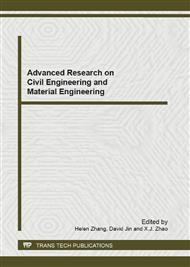p.324
p.328
p.332
p.336
p.340
p.344
p.348
p.352
p.356
Study on Lanthanide Oxides Materials in Material Engineering with a New Method
Abstract:
In material engineering, the higher charge number of an element in a compound, the more strongly its atom attracts electrons. Hence, the polarizability is entirely different when it is in different valence states. Moreover, most elements are able to exercise more than a single coordination number in a given oxidation state. On the basis of ionization potential and effective ionic radius, some empirical expressions were proposed to predict the electronic polarizability and optical basicity of lanthanide oxides for the different coordination numbers (6-12). The estimated values are in perfect agreement with previously reported values in the literature. This work provides a simple and effective method to predict the electronic polarizability and optical basicity of lanthanide oxide
Info:
Periodical:
Pages:
340-343
Citation:
Online since:
September 2012
Authors:
Price:
Сopyright:
© 2012 Trans Tech Publications Ltd. All Rights Reserved
Share:
Citation:


